My Links: AardsmaFive Homepage My Homepage
About This Page
This is my nature page. I have always liked nature. I will be talking about different tools and methods I use in watching nature.
I especially enjoy watching birds. I really like birds and mammals that are part of a water community.
Probably the most important tool I have is a pair of
Bushnell 10x50 binoculars. They are very important for getting Ďup closeí to an animal or bird.
For instance, the other day I was watching flocks of Canada Geese landing in the cornfields near our farm. I spotted a bird that was flying with the geese but did not look
like quite like the others. I ran in and got my binoculars and had a look. I turned out to be a White Fronted Goose which are rare!
Another important tool is a good
field guide. I use one called The North American Field Guide. It has plants and animals in it.
Now that I have told you the basics I plan to write about different
things I see. So be sure to stop in often!
I caught this amazing praying mantis!
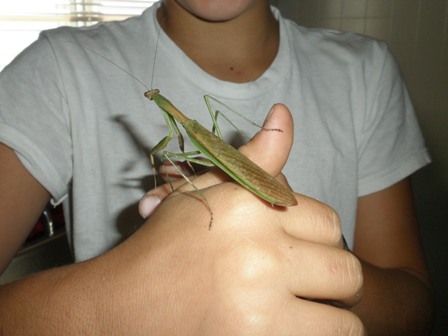
|
December 17, 2011A New Camera!!
I recently purchased a digital camera for wildlife photography! I have really enjoy learning how to use it. It has 35x optical zoom. That much optical zoom is
a must for bird photography. I hope to take it on some birding trips in the future. Well, they say a picture is worth a thousand words so here are a few thousand. :)
Female House Finch at my feeding station.

|
One of those pesky house sparrows. This one is a male.
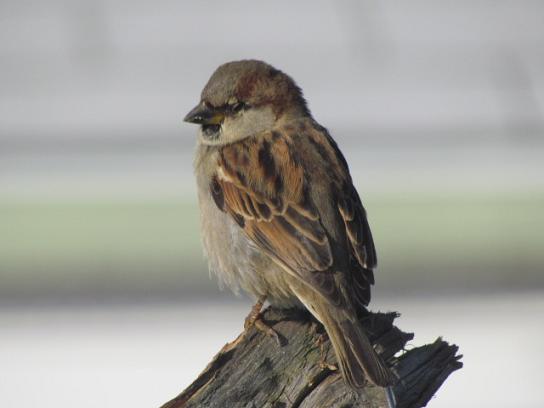
|
This is A Coopers hawk in one of the juniper trees in my back yard.
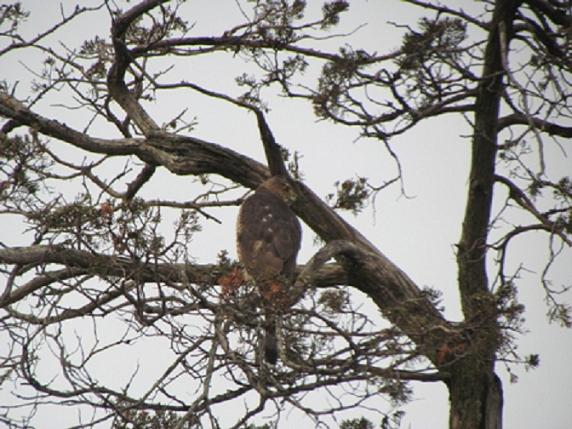
|
A male house finch.
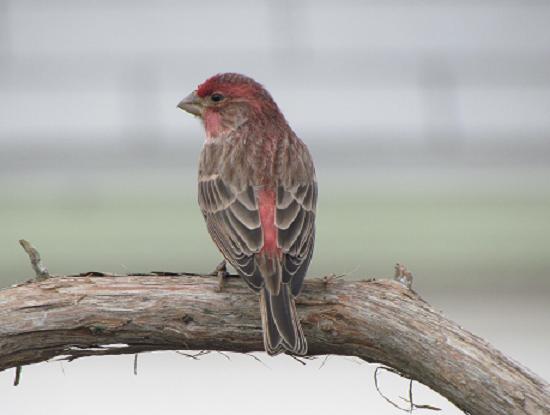
|
April, 08, 2011.
The Tree Swallows are back and nesting!
Tree Swallows nesting in a Blue Bird house I built a few years ago. They have not built a nest yet, but keep going in and out of the hole!
They are beautiful birds with green/blue backs and a creamy underside. They make an almost constant twittering. They donít seem to care about me getting
within fifteen feet of them. But if I get too close, they start diving and swooping within about five feet of my head.
This is the bird house that they are nesting in.
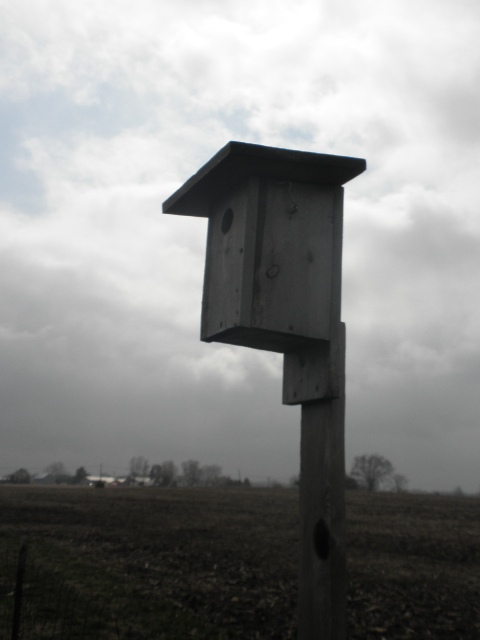
|
This could be the male or the female. They are hard to tell apart.
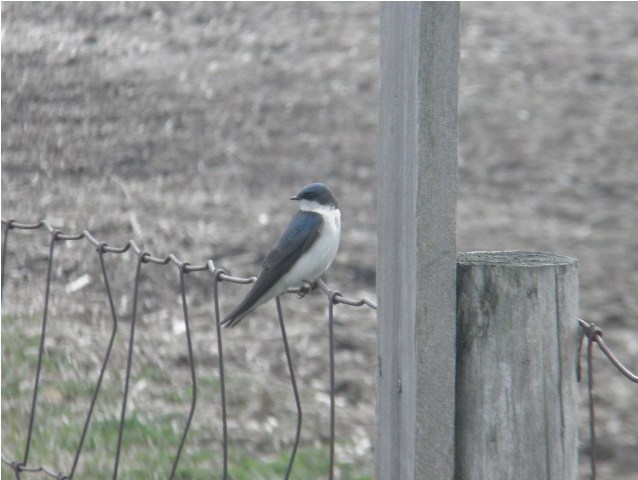
|
I have purchased a new pair of BSA binoculars because my old pair broke. They are 12 X 50. They are the
most powerful I have ever had. I spotted a Yellow Bellied Sapsucker Woodpecker this morning! It was the first time I have seen one of them! I have also
spotted a Downy Woodpecker, and some Fox Sparrows with them.
Thanks for stoppin' in!
January 04, 2011.
Happy 2011 everyone!
Hope you all had a great Christmas and New Years.
This is how to make a pretty simple bird feeder. It is great for feeding squirrels and Blue Jays.
How to make a Corn Stake bird Feeder
Pound some 8 or 10 penny nails through a board so they stick straight up. Put the nails 3 to 4 inches apart. Skewer whole ears of corn on the nails.
Place the feeder near trees, about 3 to 6 feet of the ground.
My humming bird feeder keeps busy.
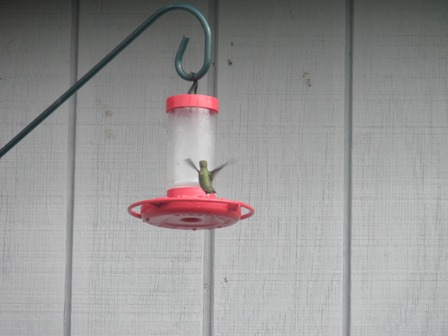
|
Thursday, December 30th 2010
Winter on the Farm
This winter has been unusually wintry
here in East Central Illinois. We have had several good heavy snows, some hoare frosts and even an ice storm.
Our farm during a recent "fall" blizard.
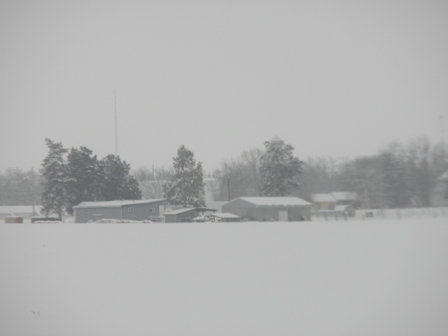
|
I take care of the farm except for the laying hen chicks. (I raise them until they are old enough to be moved out
of the brooder and into the coop and then my younger brother Caleb takes over.) I take care of our steer, homing pigeons, and barn cats.
First, about the steer. He is a brown Swiss. He is about eight months old and is pretty big for his age. He is very shaggy with his winter coat.
He eats a VERY large amount of grain and hay every day. Dad and I built a very sturdy bucket holder and bought a heated water bucket for him. Now I do not
have to knock the ice out of his bucket every day. Building the holder was the last step to building a more or less indestructible pen. I built a feeder
earlier in the fall and it is still alive.
The pigeons do not like winter very much. They can't forage for waste grain very well when there is a
foot of snow on the ground. I have to feed them every day. They eat a surprising little amount for a flock of more then fifty.
There isn't much to say about the barn cats. I just set out a bowl of water for them every morning. They have their food up in the rafters of our
barn so the dogs can't eat it.
The chicks have all their feathers now and are living in the coop. We have about twenty-five this year.
They should begin laying by May.
Well, that's our farm in the winter!
More snow!
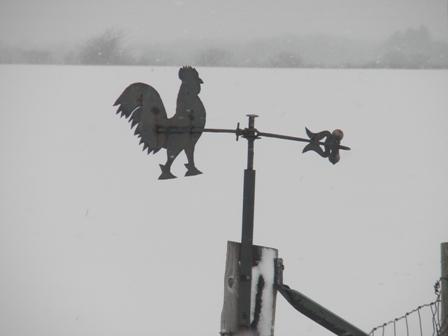
|
I have seen some interesting animals around the farm. One night,a couple of weeks ago,
I woke around four in the morning and as I walked by my window I noticed something. The moon was out and it was bright as day outside.
I saw a coyote about 25 feet for the corner of our property. I watched him for a few minutes and then he walked behind our barn! That was
the first time I have seen a real live coyote!
I have had hawks catch a few of my pigeons this fall and winter---mostly old or young birds.
Here I am playing with my nephew Sammy.
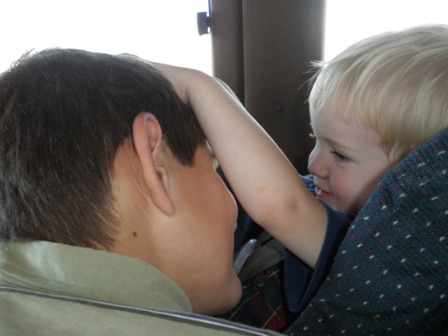
|
May 12, 2010
CASE STUDY
The Eastern Kingbird.
This is a report about a bird that I have seen around our farm.
(For my convenience I have abbreviated "Eastern Kingbird" to"E.K.".)
The Eastern Kingbird lives in all of the U.S. except for the far West and Southwest. It's range also includes the southern half of Canada.
The E.K. is part of the Tyrant Flycatcher family. Many people see the E.K. sitting on a fence or telephone wire waiting for an insect to fly by. When it spots one it darts out and snaps it up. E.K.'s may also forage on the ground for beetles or grasshoppers.
The E.K. is mostly white underneath with white cheek patches. It is sooty grey/black above. Its tail feathers are black with white tips.
The E.K. has a strange song. It sound like this: pe-cheer-ry or dzee-dzee-dzeet.
E.K's live in many different habitats but avoids heavy woods.
They are mostly seen in orchards or farms. It also inhabits, woodland edges, river bottoms, and parks.
The E.K. earns it name by being almost fearless.
They attack hawks and crows. One person reported seeing a E.K. repeatedly attacking a low flying airplane!
The E.K. migrates to South America in the winter.
Both male and female construct the bulky nest of sticks, grasses and moss. They frequently built nests over water.
The female lays 3 to 5 eggs that are
creamy white with lots of brown and lavender spots. The female incubates the eggs for 12 or 13 days.
I helped my Dad make a BBQ rotisserie for our family reunion
in August.
I am the number 7!
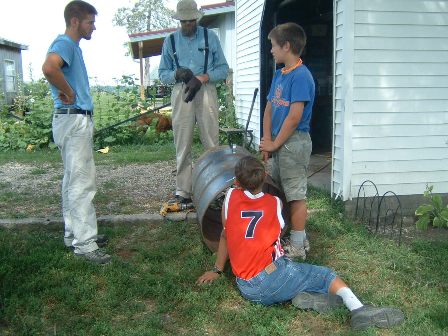
|
March 1, 2010
Today Beka came in the house and told me to look
out the window. I looked and there was a hawk sitting on the edge of the pool looking at our pigeons! I have seen him around before. It has chased the pigeons a
couple times. But this was the first time I really got a good look at him. I grabbed my binoculars and looked at him. He didnít look like he was going anywhere
so I grabbed my field guide too.
As I looked at him I tried to find something distinctive about him. I did this because there are different kinds off
small hawks and they are hard to tell apart. All I noticed was that he had rusty bars on his breast that got closer together as they went up. This was all I
need to know. I quickly found out that he was a Sharp Shined Hawk!
He was a beautiful bird, but I had to scare him away because I didnít want him
making lunch out of my homers.
|